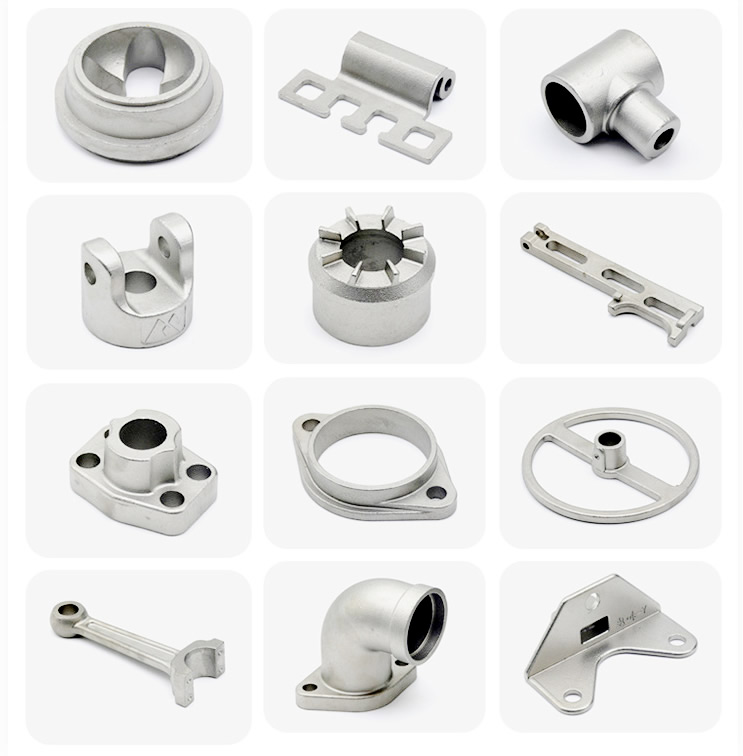Steel Foundry 101: An Introduction to Processes and Applications
1. Introduction
For centuries, humanity has relied on steel for constructing our world. Steel’s robustness and versatility have made it indispensable from towering skyscrapers to intricate machinery. The heart of this marvel lies in steel foundries, where raw materials are transformed into usable products.
A Brief Glimpse into History
The origins of steel foundries trace back to ancient civilizations, where early blacksmiths forged weapons and tools. As time progressed, technological advancements paved the way for large-scale steel production, ushering in a new era of development.
Why Steel Matters
Steel’s prominence in contemporary society cannot be understated. Its unique strength, malleability, and durability have made it the backbone of infrastructural developments worldwide.
2. Basics of Steel
Defining Steel
Steel is a metal alloy that is mainly composed of iron and carbon. The presence of carbon and other elements in varying amounts provides steel with its distinct properties.
Types of Steel
- Carbon Steel: Contains varying carbon content and minimal amounts of other elements.
- Alloy Steel: Contains additional elements like nickel, chromium, and molybdenum to achieve specific properties.
- Stainless Steel: Recognized for its corrosion resistance, thanks to the addition of chromium.
- Tool Steel: Tailored for making tools, it boasts superior hardness and abrasion resistance.
Key Properties of Steel
The world prefers steel because of its:
- Strength: Able to withstand massive loads without deformation.
- Flexibility: It can be shaped into intricate designs without compromising integrity.
- Resilience: Maintains its properties under varying conditions, ensuring longevity.
3. Overview of the Foundry Process
Demystifying the Casting Process
In the foundry process, molten steel is poured into molds to form specific shapes. Once the steel solidifies, the mold is broken, revealing the cast steel product. The art of casting has been refined over centuries, transforming it into the precise science it is today.
Foundry vs. Other Manufacturing Methods
While casting is integral to steel production, it is not the sole method. Techniques such as forging, welding, and machining also play crucial roles. However, casting remains unparalleled in producing complex, large parts with minimal wastage.
4. Key Steps in the Steel Foundry Process
a. Pattern Making
This initial step involves creating a replica of the final product, called the ‘pattern.’ This pattern guides the mold formation.
- Designing the Mold: Precise patterns are developed using computer-aided design (CAD) tools.
- Material Choices: Patterns can be made from wood, metal, or plastic, depending on the casting volume and precision required.
b. Molding
A mold cavity is formed using the pattern, typically with high-quality sand.
- Sand Quality: The sand must be refractory and withstand high temperatures without altering the steel’s properties.
- Cope and Drag: Refers to the upper and lower halves of the sand mold.
c. Melting and Pouring
The heart of the foundry process involves melting raw steel into a molten state and pouring it into the mold cavity.
- Steel Melting Furnaces: Two primary types dominate – Electric Arc Furnaces (EAF) and Induction Furnaces. EAFs use electric currents to melt steel, while induction furnaces leverage magnetic fields.
- Pouring Techniques: Ensuring an even pour is vital. Too fast, and you risk introducing air bubbles. Too slow, and the steel can solidify prematurely.
- Temperature Control: Achieving and maintaining the correct temperature is crucial. It ensures the molten steel fills the mold and solidifies correctly.
d. Solidification and Cooling
Once poured, the steel begins to cool and solidify, adopting the shape of the mold.
- Cooling Rate: This plays a pivotal role in determining the steel’s microstructure and, by extension, its properties. Slow cooling might lead to coarse grains, while rapid cooling can produce finer grain structures.
- Risers and Chills: To ensure uniform cooling, risers (openings in the mold) allow excess molten steel to flow out, and chills (cooling agents) might be added to regulate the cooling rate.
e. Removal and Cleaning
With the steel solidified, it’s time to remove it from the mold and clean it up.
- Breaking the Mold: The sand mold breaks apart once the steel sufficiently cools, revealing the cast product.
- Cleaning Methods: Excess material, known as ‘fins’ or ‘flashes,’ is removed using techniques like shot blasting or grinding, ensuring the product matches the desired specifications.
f. Inspection and Quality Control
Ensuring that each product meets the established standards is paramount.
- Non-Destructive Testing (NDT): Techniques such as ultrasonic, radiographic, and magnetic particle inspections help detect internal and surface defects without damaging the product.
- Certifications: Foundries often adhere to international standards, ensuring consistent quality across batches.
5. Steel Foundry’s Impact on Material Properties
The foundry processes significantly influence steel’s properties.
- Role of Alloying Elements: Elements like chromium, molybdenum, and nickel can be added during the melting phase to enhance specific properties such as strength or corrosion resistance.
- Grain Structure: The cooling rate directly impacts the steel’s grain structure. Fine grains can enhance strength, while coarser grains can improve flexibility.
The world of steel foundries is an intricate blend of art and science. As we’ve explored, every stage of the foundry process plays a pivotal role in shaping steel’s final properties. From the initial pattern design to the last quality control checks, each step is a testament to humanity’s quest for perfection and innovation. As steel continues to be a cornerstone of modern civilization, foundries stand at the forefront, ensuring we have access to high-quality materials to shape our world.

